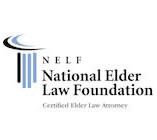Funds held in a properly drafted special needs trust will not affect a Supplemental Security Income (SSI) or Medi-Cal recipient’s benefits. But problems can develop when funds come out of a special needs trust. This leads to one of the most commonly asked questions about special needs trusts – what can the trust pay for?
This question is best answered by stating what a special needs trust for an SSI beneficiary should typically never do without first consulting a special needs planner: the trust should never give the beneficiary cash or a cash equivalent or pay for food or shelter.
The simplest part of this rule is the part dealing with cash. If an SSI beneficiary receives cash (or a cash equivalent like a gift card) from a trust (or anyone else for that matter), her benefit will be reduced by one dollar for each dollar received, up until the point that she loses SSI completely. This is a hard-and-fast rule and should be disregarded only after a serious conversation with an attorney.
The rules about food and shelter are a little more complicated. If a trust pays for a beneficiary’s food or shelter directly to a landlord, restaurant or store, the beneficiary could lose up to one-third of her SSI benefit. In addition, payment of bills for housing-related expenses like mortgage payments, real estate taxes, utilities and condo fees are considered payments for housing that cause a similar reduction in benefits. While a one-third reduction in benefits might be a small price to pay for guaranteed shelter and meals, if the beneficiary works or receives other income, the additional one-third reduction could cause the beneficiary to actually lose SSI, and accompanying Medicaid benefits, entirely.
Once you have taken cash, housing and food off the table, a special needs trust can typically pay for most other things a beneficiary might need to supplement her lifestyle. But because these rules are very complicated, it is best to always sit down with your attorney to discuss what you intend to do with your trust before making any payments to anyone.
* The information contained in this Blog is intended for general information and educational purposes only and does not constitute legal advice or an opinion of counsel.




